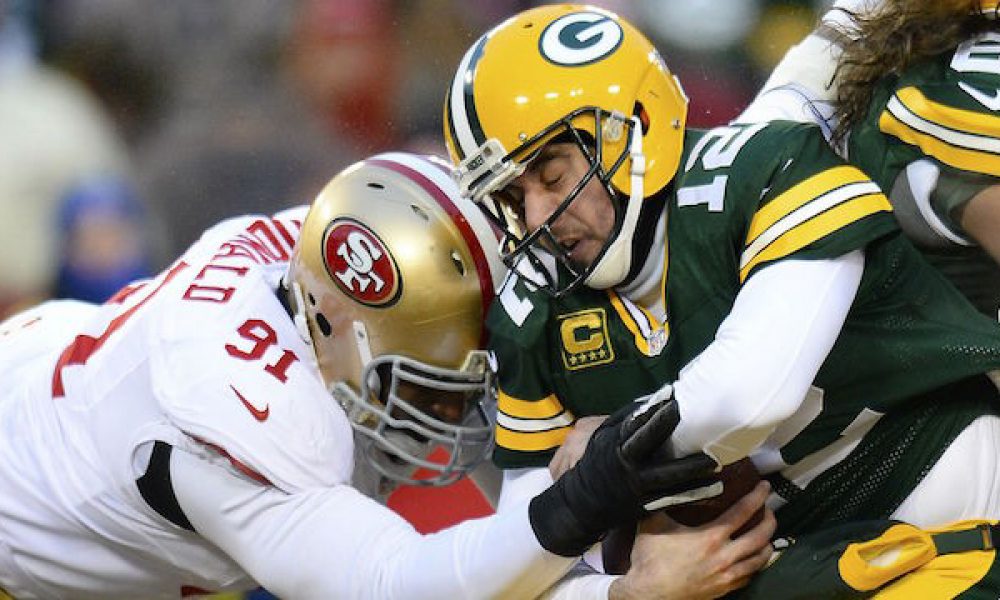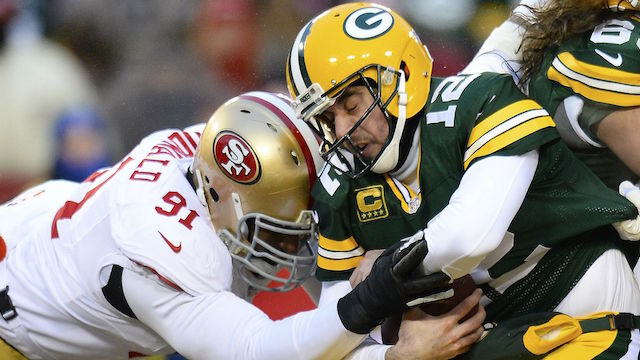
NFL Safety Boss Wrong To Suggest Helmet Ban Still A Future Possibility
The long-standing debate over the safety measures the NFL should take to reduce concussions took an interesting swerve today, with the chairman of the NFL’s Health and Safety Advisory Commission, Dr. John York, declaring he can envision a future in which helmets are banned from the league.
“[I can] see a time without helmets,†said York, before admitting, “It’s not around the corner, but I can see it.†The stance is an interesting one, and one that hasn’t been offered much rational discussion within the realm of player safety.
Theoretically, the reasoning behind the proposal is sound. The recent increase in head trauma-related injuries has been linked in part to violent collisions with a player’s head and the inside of their own helmet, causing the brain to rapidly bounce off the inner skull. Even with appropriate safety measures put in place by the league – including the moving up of kickoff restarts and the penalizing of helmet-to-helmet contact, there is no way to minimize the impact of the head clash itself following a heavy but legal hit.
The problem with York’s suggestion is muscle memory. NFL players have been taught to hit a certain way since the first they first donned the pads and cleats. Although some franchises like the Seattle Seahawks are trying to adopt “rugby style†tackling into their training sessions, it would take a much more full-scale approach from the NFL to drastically alter the engrained hitting dynamics developed by defensive players.
Even those who cite fewer concussions in full contact sports like rugby as a proponent for a helmet ban would be missing the point. Rugby is a far more fluid game; in which it is only legal to make direct contact with the player carrying the ball. With both forces moving towards each other, each man is able to brace for the hit and better protect himself.
Football has none of that fluidity. It is a stop-start, high-impact affair in which players are not always aware of where a hit is coming from. Unless the league reconstructs its entire defensive rulebook from the ground up, an absence of protective gear is only going to do more harm than good.
It was an increase in player deaths, not injuries, that brought about the introduction of helmets in the first place. A failure to heed the mistakes of the past, albeit far into the future of the sport, would result in history repeating itself in the worst way possible. Helmets are here to stay.





